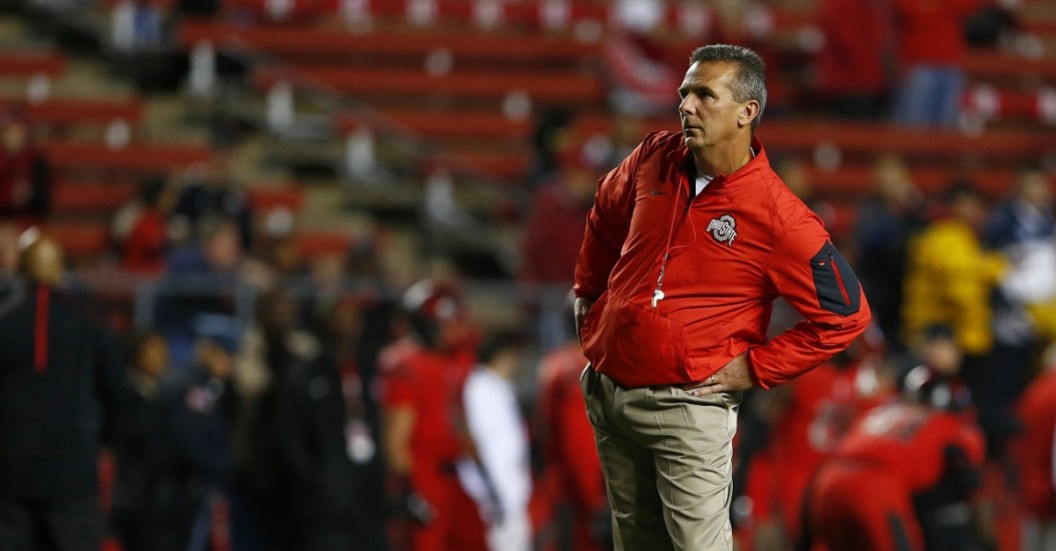Urban Meyer and the Ohio State Buckeyes suffered an exodus to the NFL that was awe-inspiring after the 2015 season. The Buckeyes placed five players in the first round of the NFL Draft and 14 players overall within the seven-round process, leaving the cupboard relatively bare as far as returning talent is concerned for 2016.
Videos by FanBuzz
Pete Thamel of Sports Illustrated's Campus Rush previewed Ohio State's 2016 campaign, though, and he drew an interesting comparison between this year's group and that of the 2014 squad:
There are parallels to be drawn between this year's Ohio State squad and the inexperienced 2014 team that steadily improved and rallied to win the national title after Braxton Miller's injury and a Week 2 loss to Virginia Tech. That season was supposed to be a set-up year for 2015, when the Buckeyes were an authoritative preseason No. 1 but never quite got their offense in synch, ending up 12-1 and missing the Big Ten title game and the College Football Playoff.
Expectations will likely follow a similar pattern over this year and 2017. The Buckeyes will be viewed with skepticism this season until the young talent manifests itself, and they should return next fall as prohibitive title favorites projected to drop another busload of players—like those talented young corners—in the NFL.
It would be (quite) aggressive to assume that the Buckeyes would replicate the 2014 success of a national title, but Thamel's point stands. This is still a team with a tremendous amount of NFL-caliber talent on board and it is definitely worth noting that the 2016 team has a returning stud at quarterback in J.T. Barrett and an All-American on defense in linebacker Raekwon McMillan.
With the team's toughest conference game (Michigan) coming at home, the schedule sets up reasonably well for the Buckeyes, and Ohio State could even potentially afford a loss at Oklahoma on Sept. 17 if Urban Meyer's group ran the table in Big Ten play. At this point, any discussion of a complete repeat of 2014 would be unwarranted, but the fact remains that when looking at a potential "transition" year in Columbus, the bar is still impressively high.
